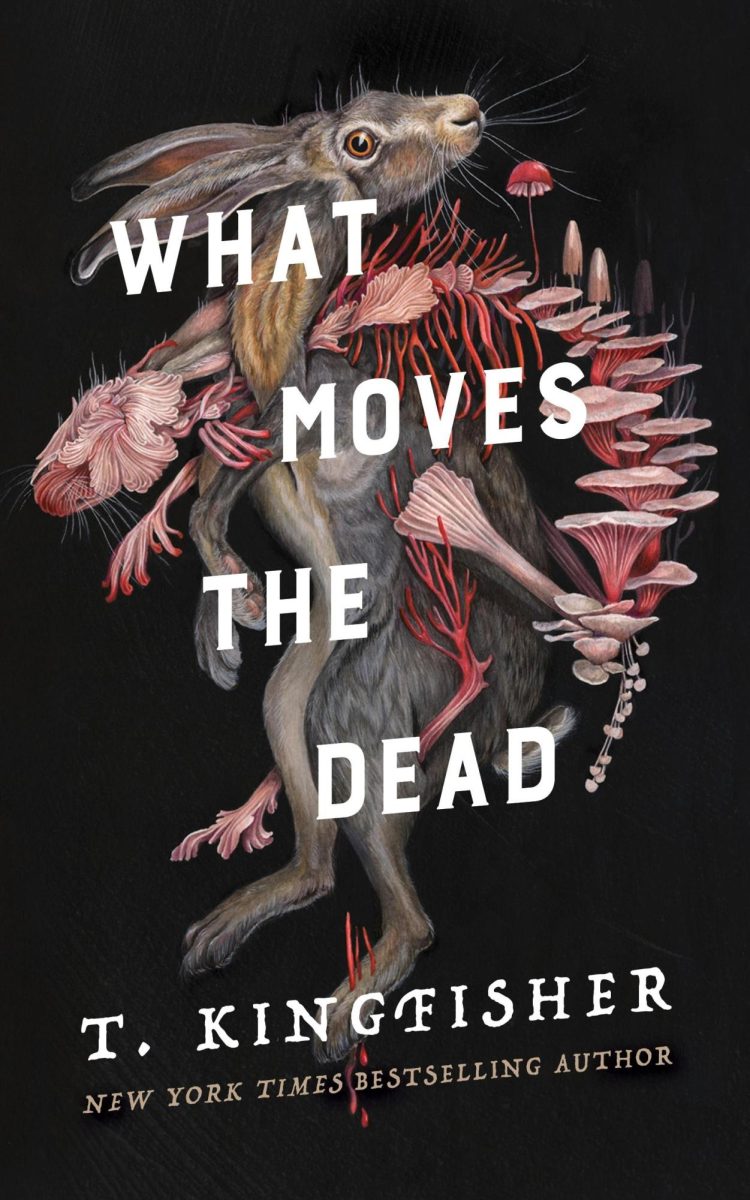Those who do not want to imitate anything produce nothing. That is a quote from Salvador Dali, one of the most infamous and influential artists of the 20th century. One of the leading figures in the Surrealist movement whose works are still revered today, Dali’s opinion rings sincere.
Kingfisher’s short book “What Moves the Dead” proves the statement true. The 13-chapter story is based off a short story by Edgar Allen Poe released in 1839. Poe’s original, “The Fall of the House of Usher,” is less than 15 pages long but is considered an important piece in American literature.
“The Fall of the House of Usher” is an example of the gothic storytelling that defined Poe’s career. The short story deals with the themes of isolation, mental illness and pure dread. The structure also ensures that every single line in the story is important for moving the plot forward.
These are the same ideas expanded on in T. Kingfisher’s “What Moves the Dead,” except modern audiences will find it better. That’s because it’s not super short, and it’s written in the 21st Century.
In the author’s note, Kingfisher wrote about Poe’s story: “It’s short, and while there’s a lot to be said about economy of storytelling, I found myself wanting more.”
As for the plot, T. Kingfisher’s story is written through the eyes of Alex Eastern. Alex has traveled to see his friends, Roderick and Madeline Usher, the last siblings living in the House of Usher. Alex and Roderick once served side by side in a hopeless war, and they haven’t seen each other in years.
Essentially, Roderick and Madeline are sick. Madeline 10 times more than Roderick, as she is close to her deathbed by the time that Alex arrives. Roderick tells Alex he believes their illness is because of the massive mansion they have lived in most of their lives.
The Usher house plays an important role in the story. It’s a crumbling fungi-riddled structure sitting adjunct to a haunting lake. It’s a maze of cold and eerie halls, but the Ushers cannot leave due to how ill they have become.
Like “The Fall of the House of Usher,” Kingfisher’s retelling has the themes of isolation, mental illness, and dread. But it adds characters that bring so much more to the story, an actual explanation that readers get to discover, and more horror themes such as body horror (warning if that’s a non-starter for queasy readers).
If a reader were to go over Poe’s story before “What Moves the Dead,” they would know how the story ends: what happens to the Ushers, their cursed home, and the fate of the narrator. But it could also give greater appreciation to Kingfisher’s story.
Either way, “What Moves the Dead” is an amazing story to unravel and understand as all the horrifying details start to make sense and the puzzle pieces come together.


























